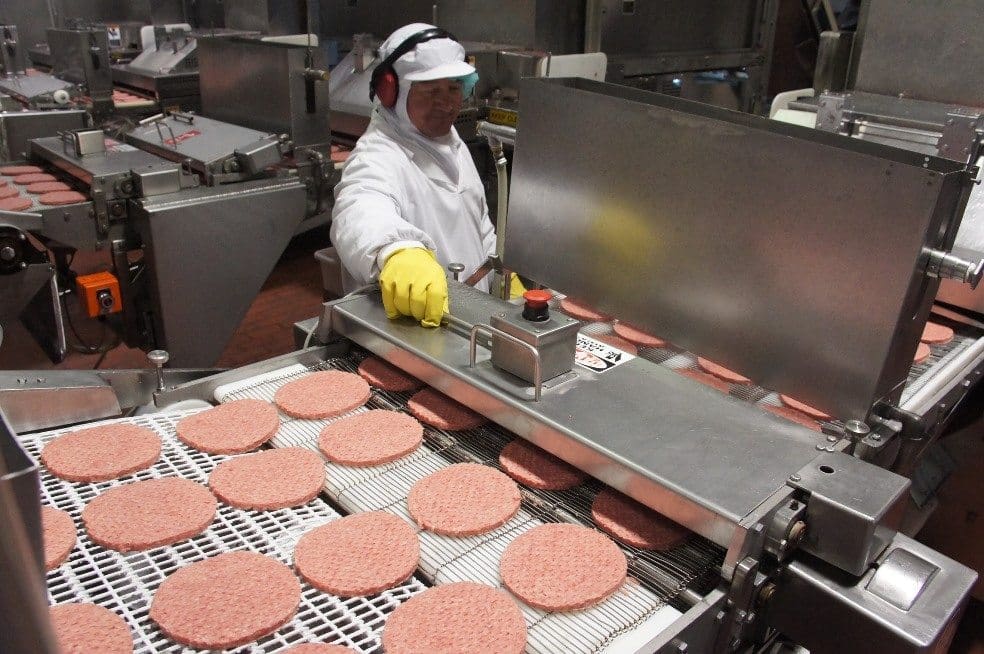WHILE progress has been made, there’s still considerable potential for beef producers and processors to integrate and collaborate more effectively, one of the largest purchasers of Australian beef told a producer audience near Adelaide last night.
Speaking at a producer gathering in the lead-up to today’s Meat & Livestock Australia AGM and industry forum was Frank Carbone, managing director of McDonald’s Asia Pacific Consortium (MAC).

Frank Carbone
Since its launch in 2003, MAC has been responsible for purchasing of red meat raw material out of Australia and New Zealand for use in McDonald’s operations in the US, Australia and ten other Asia Pacific markets. It services the needs of almost 20 large grinding operations for the hamburger trade.
Since the business started 13 years ago, MAC has purchased around 1.36 million tonnes of Australian and NZ beef.
Just last week, MAC Asia Pacific Consortium changed its business name to Agrifoods Global Pty Ltd.
Against a background of extreme high Australian cattle prices and a national beef herd at 20-year lows due to drought, Mr Carbone made several references to the importance of assuring supply for the MAC system, and the need for competitive and predictable pricing, in order to deliver greater ability to see forward on price and supply.
Better integration needed
He used the occasion to urge the industry to consider ways to deliver more integration throughout the supply chain.
“There’s still not the level of producer-processor integration, or connection, that we think can drive better outcomes,” he said.
“We’re still very much driven by the market. Right now, producers are having a very good time of it, just as processors did a year or two ago. But it’s really about finding ways to integrate and collaborate more closely, to remove some of those peaks and troughs.”
“If that produces more visibility about outcomes – whether that be volume or price – then we believe that creates a more sustainable outcome for everyone.”
“For us, we have the ability to bring volume to the table, and if that means deeper arrangements can be put in place with producers and everyone in between, that’s one way that we feel could start to reduce volatility across the supply chain and drive a more sustainable outcome for all participants in the chain,” Mr Carbone said.
“That’s got to be better for everyone. But price is always the challenge – markets move, but we can be flexible in the way we look at that, to ensure nobody gets burnt, each time there is a big swing.”

McDonald’s burger pattie production at AFC, Coominya
Mr Carbone also highlighted the value of information in the emerging digital age, and the need for it to be visible across the supply chain.
“We see a lot of investment being made by processors in new technologies – X-ray scanning, fat composition scanning for cartons and bulk, and the work the industry is doing on carcase scanning.
“For us, if that information can move relatively freely up and down the chain, it has to provide an opportunity for some of this integration to occur – particularly if a producer knows what goes out the gate, what it’s going to get in return, and how it will grade. That has to be a plus for how they can plan their businesses, and equally for processors, in how they can manage and utilise that information.”
Simple attributes like Chemical Lean (the ratio of fat to lean red meat in a carton or batch) might not seem that important as far as such information goes, but for a business like MAC, it was critically important in ‘getting each burger right.’
“When our grinders are producing the tonnes of patties that they do, even small variations in CL fat content can have big impacts on operational management,” he said.
While grinders typically used a range of CL fat contents in pattie formulation, they had to balance raw material to a very specific blend.
“If we have better knowledge about what’s coming at us in terms of raw material for export, case by case in a load, it creates an opportunity for that to be scheduled into the plant in a more specific way, which can deliver lots of benefits.”
Verified Sustainable programs
Mr Carbone’s presentation also echoed the McDonald’s mantra about the importance of listening to the customer.
He briefly mentioned McDonald’s early exploration of Verified Sustainable programs, under trial in Canada, Australia and elsewhere, as ‘one way’ of satisfying a some consumers’ need to understand how an animal was raised, what it was reared on and how it was cared for – issues that were becoming more and more important for some customers.
“The message is, we have to listen to those who buy the product, about the attributes they are looking for – and we (the supply chain) need to continue to move towards meeting those needs,” he said.
US market outlook
A question towards the end of his presentation asked how MAC saw the outlook for Australian beef into the US next year.
Mr Carbone admitted it looked ‘bearish’.
“Obviously the US currently has plenty of domestic beef supply, and that’s likely to continue to grow for the next couple of years. And Australia is currently not competitive, on price. It does not hit us completely, however – we still maintain a supply into the US, under the model we run.
“But you’d have to expect that 2017 is not going to be the greatest year for Australian manufacturing beef into the US,” he warned.
However MAC’s stakeholders had no hesitation about continuing to source from this part of the world. Australian manufacturing beef was held in the highest possible regard, in terms of performance and safety.
